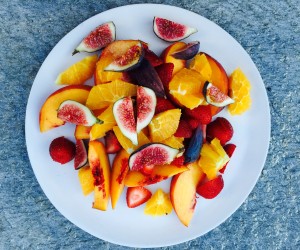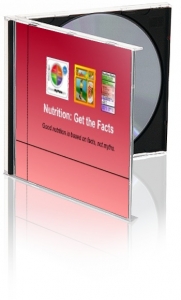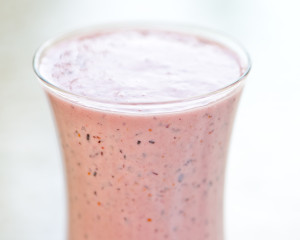

 I just harvested figs from our tree, and I’m feeling very lucky!
I just harvested figs from our tree, and I’m feeling very lucky!
Our climate is great for growing figs, so when our neighbors moved north, we adopted their tree.
If you’re not fortunate enough to have your own fig tree, perhaps a friend can share their crop with you. Or you can always find some at a local market, though it can be a challenge to find figs at farmer’s markets, since they don’t store well and have a very short shelf life. But however you try it, get your hands on some fresh figs!
When selecting figs, pick ones that are plump, clean, and dry, with smooth, unbroken skin. They should be soft and yield to the touch, but do not choose mushy ones.
Fresh figs are very perishable. They can be stored in plastic bags in the coldest part of the refrigerator, but they’ll only keep for 2-3 days after picking. If you’re lucky enough to have an abundance of figs, they may be dried, frozen, canned, or made into jam or preserves.
Many people are not familiar with fresh figs. Often their only exposure to this fruit is in the dried form or in baked goods like fig cookies. But figs can be eaten fresh, just as you would any other fruit, and they’re really a treat.
Use figs as another way to add variety to meals, or try them as another interesting fruit that can help you get those desired fruit and vegetable servings each day. Just 3-5 dried figs (about ¼ cup) or ½ cup of fresh figs count as one fruit serving.
 Now let’s talk nutrition. Figs are known for their high fiber content. They also contain more calcium, more potassium, and more iron than many other common fruits. They’re also full of disease-fighting antioxidants.
Now let’s talk nutrition. Figs are known for their high fiber content. They also contain more calcium, more potassium, and more iron than many other common fruits. They’re also full of disease-fighting antioxidants.
Fresh figs are very low in calories. About 3.5 ounces (~100 grams) or nine small figs contain only 74 calories, along with three grams of dietary fiber. On the other hand, dried figs have concentrated sugars and nutrition. 12 dried figs (the same 100 grams) contain 251 calories and 10 grams of dietary fiber. Use some caution with these dried fruits — it’s really easy to eat too many in one sitting.
So, what can you do with fresh figs?
In addition to fig cookies, figs can be used as appetizers, salads, main dishes, and desserts. Cut them in half and put them in a salad or grill them with chicken or fish. You can also mix them with feta cheese and balsamic vinegar for a show-stopping appetizer. I personally, like them chopped and mixed with vanilla Greek yogurt.
How will you enjoy fresh figs?
By Cheryle Jones Syracuse, MS, Professor Emeritus at The Ohio State University
Want to offer your clients a fun way to cook with figs? Get this free recipe handout today!
And there are lots more cooking and nutrition resources in the Nutrition Education Store! Which will make your life easier?







 Earlier this week the U.S. Preventive Services Task Force released new recommendations regarding calcium supplements. They are recommending AGAINST daily supplementation with 400 IU or less of vitamin D3 and 1,000 mg of calcium carbonate for healthy older women, stating that it doesn’t work to prevent bone fractures in post-menopausal women. However, they say that the data is insignificant to make recommendations for larger doses of these supplements or for younger women or men. See the statement here:
Earlier this week the U.S. Preventive Services Task Force released new recommendations regarding calcium supplements. They are recommending AGAINST daily supplementation with 400 IU or less of vitamin D3 and 1,000 mg of calcium carbonate for healthy older women, stating that it doesn’t work to prevent bone fractures in post-menopausal women. However, they say that the data is insignificant to make recommendations for larger doses of these supplements or for younger women or men. See the statement here: